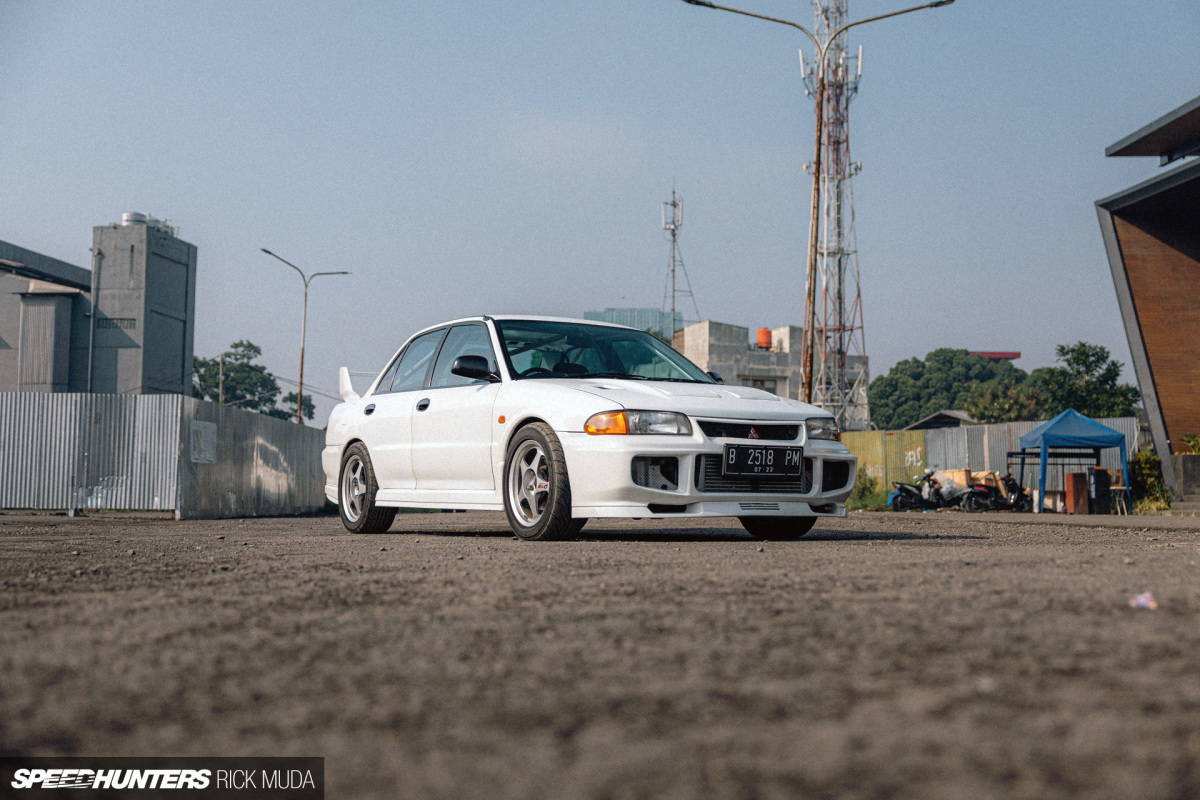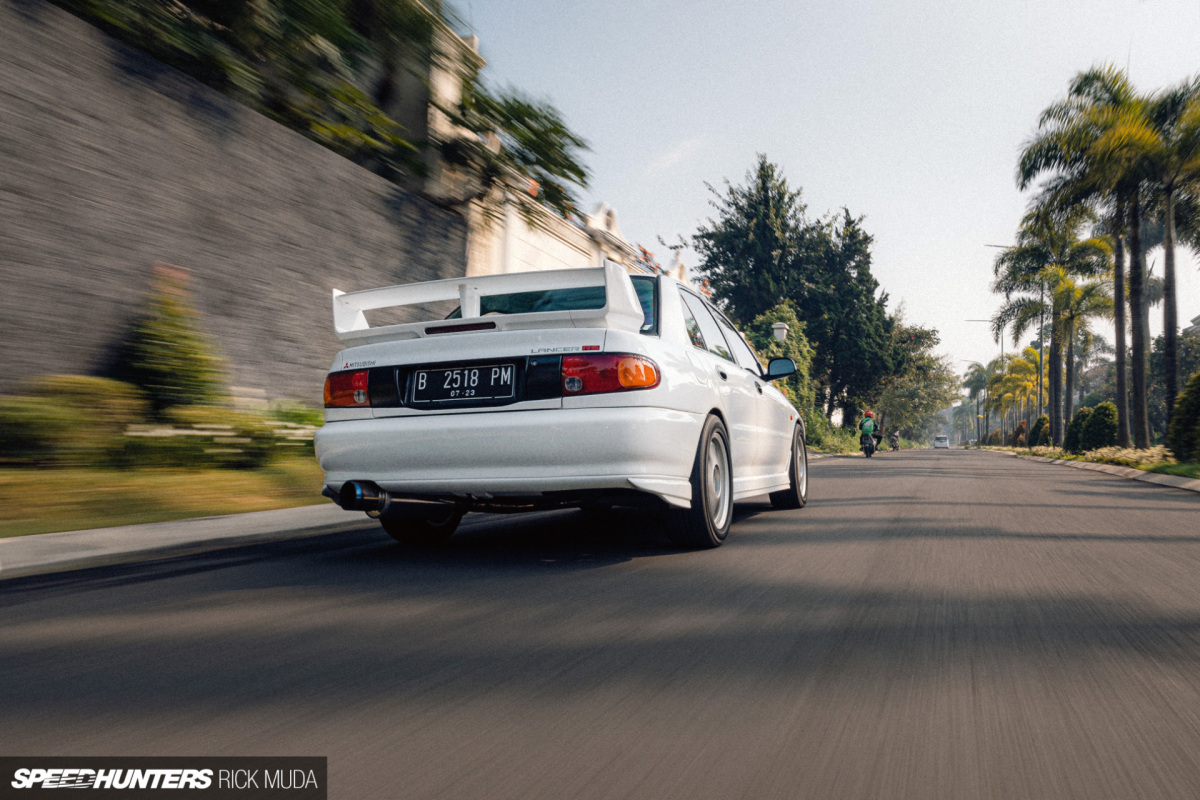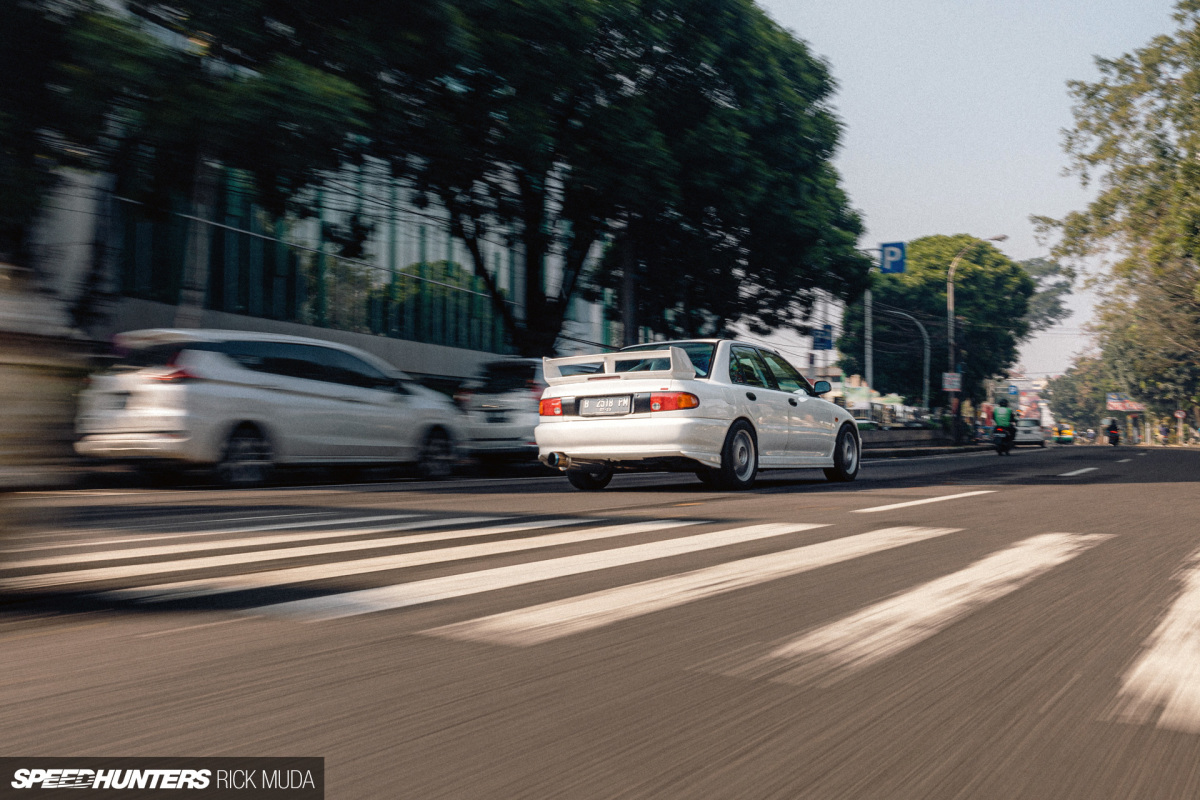[ad_1]
Rally has always been big in Indonesia, and for a long time, rally cars from Mitsubishi have been a local favourite. It’s no surprise then that Mitsubishis are popular in the enthusiast market here too.
The Lancer Evolution is of course the car that everyone wants, but being so desirable in Indonesia they’re both hard to find and expensive. And like every other JDM performance car, prices have only been headed one way in the past few years.

This of course is not something unique to Indonesia; it’s everywhere. And rising values haven’t just had an effect on tidy cars. If it’s the right model, even an absolute basket case is going to be worth good money. The Lancer Evolution II RS in question today wasn’t in bad condition when its owner Hakim found it. It just wasn’t in one piece.

In a former life the Evo had been rallied in Indonesia, but somewhere along the line it was reduced to a bare shell with its original roll cage, and a whole lot of boxes full of parts. Of course, not all the parts were there (surprise, surprise) and it ended up taking some time for Hakim to track down what was missing and make the Mitsubishi roadworthy again. Looking at the car now though, it was time well spent.

If anyone’s looking at the photos of this Evo II and wondering why it looks like an Evo III, that simply comes down to the choice Hakim made when putting it back together. The factory Evo III kit looks great and fits both the Evo I and Evo II, so why not?


The only other exterior change is the wheels, and Hakim has made a nice choice here too. Ultra-lightweight Desmond Regamaster Evos in a 16×8-inch fitment grace all four corners, wrapped up in Yokohama Neova tyres. ISX coilovers then bring the Evo a little closer to the ground for some visual and handling enhancement.

Despite the Lancer’s rally history, Hakim’s plan for the rebuild always centered around making it into a quick street car, and that called for an engine upgrade. The Evo is still running a 2.0L 4G63T, but thanks to a number of internal and external modifications made by Progressive Motorsport in Bundung, it’s now outputting 370hp. That’s plenty in a lightweight Evo RS.
Inside, the Mitsubishi four-cylinder block features CP forged pistons and Manley forged connecting rods, while up top the DOHC 16-valve cylinder head was treated to a full port and polish, bigger valves and aftermarket cams.

Boost comes via a Garrett turbo mounted on a custom equal-length header alongside a Turbosmart Hyper-Gate45 wastegate. There’s also a custom intake manifold, full stainless exhaust system and a Haltech engine management system in the mix.

The driveline has been suitably uprated too, thanks first to a Cusco Cross Mission close-ratio gear kit to make the most of the engine’s power delivery. This is joined by a OS Giken twin-plate clutch, and Cusco limited slip differentials front and rear.


As a homologation model aimed at privateer rally teams, the Evo II RS was a bare bones machine, and that’s most evident in the cabin where vinyl door cards with wind-up windows and a lack of audio equipment were standard spec. As mentioned earlier, this car also had a roll cage added for its competition use, so Hakim retained that and built on the motorsport theme.
Additions include a pair of Sparco Evo 2 seats with Sabelt harness belts, a Ralliart steering wheel and shift knob, and some Defi gauges. That ‘ALS’ switch hasn’t been operable since the rebuild, but anti-lag surely wouldn’t be out of place today.

Project cars can be daunting at the best of times, so hats off to Hakim for seeing this one through to completion from nothing more than a bare shell.
Rick Muda
Instagram: ardskellig
More stories from Indonesia on Speedhunters





[ad_2]
Source link

















